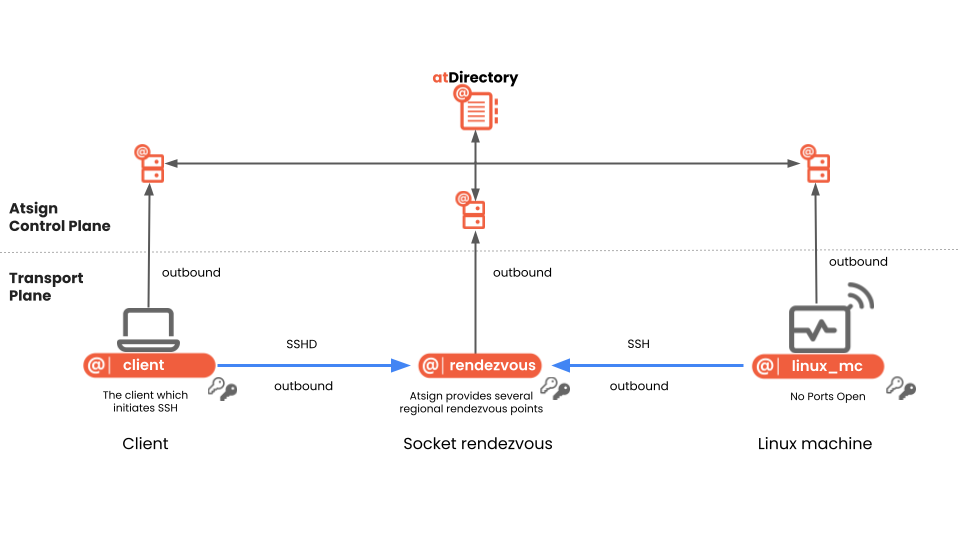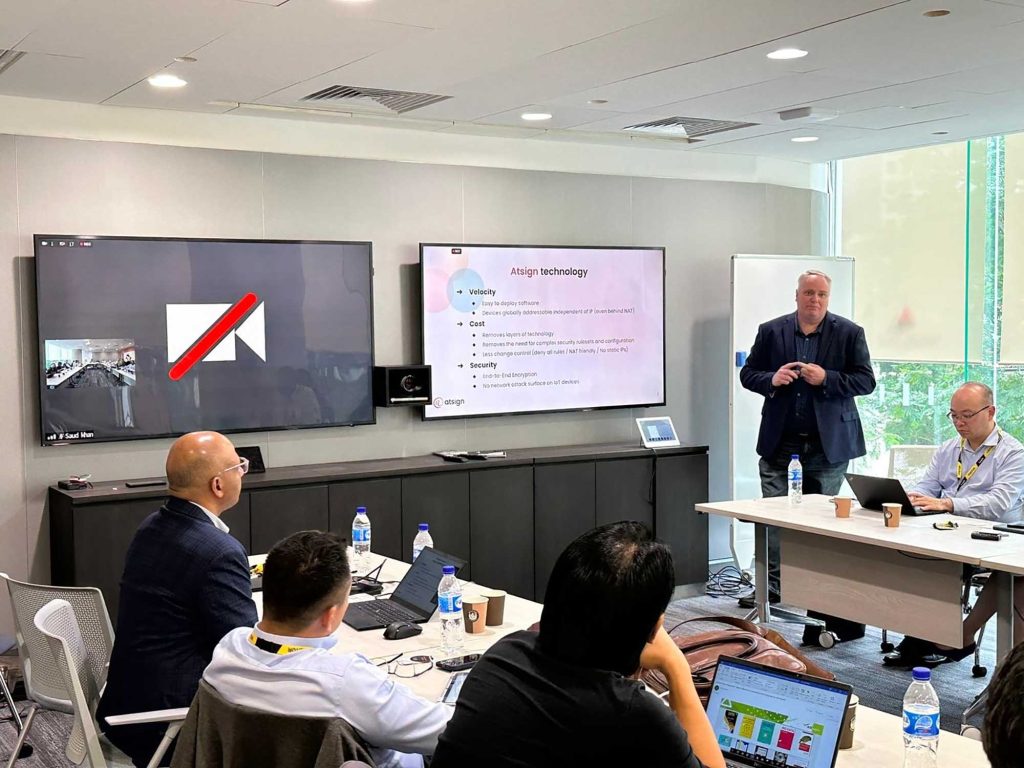Atsign is a team of diverse, distributed, and dedicated people. The company is building the infrastructure for Networking 2.0 where everything is addressable, there is clear data ownership and control, contextual responses are easy, and everything is inherently private and cryptographically secure.
Interview with Colin Constable, Co-Founder & CTO at Atsign.
Easy Engineering: A brief description of the company and its activities.
Colin Constable: Let’s face it, the Internet has issues. Malicious actors are constantly hacking into systems, stealing data, manipulating facts, and holding the rest of the world ransom.
But the problem isn’t with the Internet. It still does exactly what it was built to do in 1969: join internet protocol networks together into one network, one “inter” network— the Internet. The real problem is that we keep trying to make the Internet do things it wasn’t meant to (facilitate financial transactions, transport sensitive data, protect for private, personal interactions). To make these things work, we’ve cobbled things together on top of the existing foundation, leaving vulnerabilities for people and organizations to exploit and creating layer upon layer of technical complexity.
Atsign is leading the networking 2.0 evolution with our award-winning, patent pending atProtocol and SDKs. The atProtocol adds security, addressability, and context support to the existing data transport foundation, eliminating network endpoint attack surfaces while making them reachable no matter how they are connected to the Internet, even behind firewalls.
Atsign’s SDKs make it easy to secure data from its origin to its intended recipient(s) by encrypting it at the edge, and makes it easy for contextual data exchanges. Our SDK’s make it easy for engineers to create software that protects IoT devices and the data they create. For example, SSH No Ports enables sys admins to access and manage devices from any location, even if the device is behind a firewall and you don’t know its IP address. And it does this without needing to open listening ports, not even port 22, so there is no network attack surface on the device. Our SDKs also make it easy for app developers to create privacy-first apps like atmospherePro, atBuzz, and Wavi that puts people in control of their data.
E.E: What are the main areas of activity of the company?
C.C: We initially focused our activities on building the open atProtocol, networking 2.0 infrastructure and open-source SDKs. More recently, we’ve been using those tools to help organizations implementing large IoT deployments, and IoT manufacturers secure IoT and network devices on the Internet. We’ve done this in a variety of ways:

End-use software – We’ve just launched our first product SSH NoPorts on NoPorts.com. SSH No Ports allows people to securely access devices remotely regardless of where they are (even behind firewalls) without any additional configuration and without the need of an external-facing sshd port.
OEM partnerships – we’ve partnered with a variety of network device manufacturers to embed our technology into their devices making them addressable and accessible while minimizing (if not eliminating) attack surfaces).
IoT – We’ve partnered with a variety of manufactures, platforms, and systems integrators to secure IoT devices, protect their data and add new functionality that didn’t exist before.
E.E: What’s the news about new products?
C.C: We’re really excited about the release of our new product, SSH No Ports. Built on the Atsign technology platform, SSH No Ports enables individual systems administrators to ssh to their devices without the device sshd needing to have the sshd port (usually port 22) open on anything other than the loopback interface (an enterprise version of SSH No Ports will be available soon).
Additionally, it makes devices addressable meaning that systems administrators can access their devices no matter where they are (as long as they have an internet connection) without having to reconfigure firewalls, VPNs, or set up port forwarding.
Interested in learning more about SSH No Ports and how it’s implemented?
E.E: What are the ranges of products?
C.C: SSH No Ports is the first in a series of products that provides remote access IoT and network devices without them having any network attack surface (i.e. no open ports). Additional products that will be made available in the near future include:
- RDP No Ports
- SSH No Ports – Enterprise edition
- API No Ports
- Config No Ports
- Logging No Ports
- VPN No Ports
Beyond these products, we’re also working with a variety of IoT devices and Gateway manufactures to embed Atsign technology into their devices. This will allow full access to their devices and enable the devices to send end-to-end encrypted data that’s only readable by intended recipients without having any network attack surfaces or public IP addresses, no matter where they are in the World.
E.E: At what stage is the market where you are currently active?
C.C: We’re just at the start of our journey in the marketplace, having just recently launched SSH No Ports and announced a series of the partnerships we mentioned earlier, but don’t blink, we’ll be announcing several other partnerships and products very soon.

E.E: What can you tell us about market trends?
C.C: The IoT market is growing very quickly. According to Fortune Business Insights, the global IoT market size was valued at USD 544.38 billion in 2022 and is projected to grow from USD 662.21 billion in 2023 to USD 3,352.97 billion by 2030, exhibiting a CAGR of 26.1% during the forecast period.
Unfortunately, IoT devices are incredibly vulnerable to cyberattacks. Despite the fact that the IoT security market has grown from $1.5 billion in 2018 to $4.7 billion in 2022 (source: Market Research Future), the number of cyberattacks have increased dramatically. According to a report by Check Point Research, there were over 112 million IoT cyberattacks in 2022. This is more than a 3x increase from the number of IoT cyberattacks in 2018, which was around 32 million.
But the attacks keep happening because IoT devices are hard to secure in a light-weight way. Layering on firewalls and VPNs doesn’t work for IoT devices. But Atsign’s technology can provide better security, without the layers, at a fraction of the cost, and a much faster pace of implementation.
E.E: What are the most innovative products marketed?
C.C: All of Atsign’s products are based on innovative Networking 2.0 principles.
E.E: What estimations do you have for 2023?
C.C: By the end of 2023, you can expect the discussion of the concepts of Networking 2.0 (addressability, devices security, data privacy, contextual data sharing, and attestation) to be widely discussed in the press, in technical forums, and in boardrooms.
We’ll see several IoT and network device manufacturers announce their plans for adopting and integrating Networking 2.0 technologies (some of them will be Atsign’s) into their product lineup.
We’ll see large companies in a variety of industries (including healthcare, insurance, and transportation) join the forward thinking companies with whom we’re in discussions in making plans to use Networking 2.0 technologies to build new customer experiences that will disrupt their industries.

